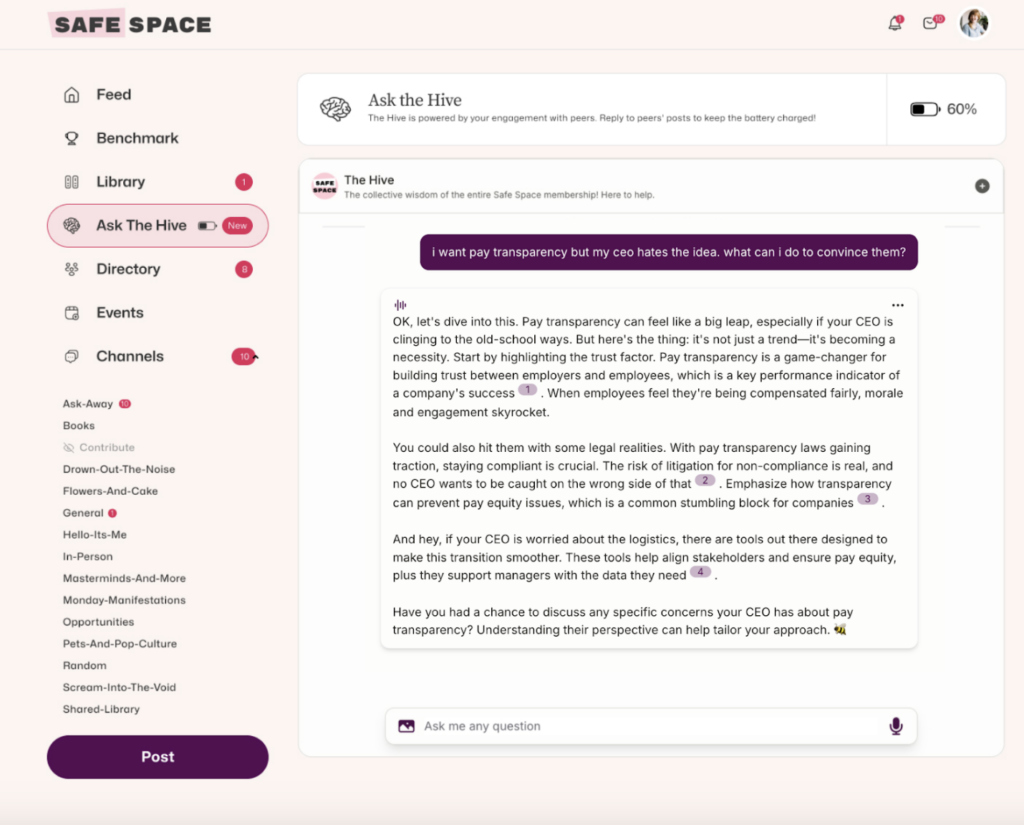Every HR leader I know has a story about working with a toxic leader.
Usually more than one story…
Toxic leaders can wreck an environment with their actions.
They:
- Create stressful and high pressure situations/environments
- Generate conflict and exacerbate tensions
- Foster negative atmospheres
- Give preferential treatment to certain employees
- Display a lack of empathy and little concern for employee wellbeing
And this is not an exhaustive list!
And guess what???
Toxic leaders have a massive impact on retention. (I’m almost certain you knew where I was going with this.)
The million dollar question is: what does it take for a toxic leader to realize the impact of their behavior?
The answer: a lot.
If I had a wand I would wave it and make all the toxic leaders disappear. We’d lose maybe like 50% of the leaders but still! Since this isn’t Hogwarts, I have some tips that could help…
3 things you can do to help a toxic leader before their impact seeps into the organization and it turns to the point of no return:
- Give Feedback
- Share data
- Lean on someone else
Let’s dig into these!
1. Feedback
Giving feedback to a toxic leader is DELICATE.
You have to tread very very very carefully.
I’ve been scared to give feedback to a toxic leader before I was worried about their reaction.
But if you truly want someone to change, they have to understand the impact of their behaviors.
JOIN 150K+ HR LEADERS
Get insights, learnings, and advice on how to build companies and cultures that people actually love.
No spam. Unsubscribe any time.
Spoiler alert: Most people are unaware of the impact of their actions and lack self-awareness.
As HR we play the role of helping everyone be aware. What a joy!
When delivering the feedback:
Be specific. You should be able to share exact behaviors and situations.
Share the impact. It’s important to talk about how this impacts the team and share perspectives.
Suggest an alternative. Sharing a different approach to take could help the leader realize the error in their ways.
Offer support. What resources are available? Potentially a professional coach, a course or 1:1s with HR.
📣Example:
[Specific] In last week’s meeting you publicly criticized your team and their failures.
[Impact] It has negative impacts such as creating a negative team environment, demoralizing the team and creating stress and fear around making mistakes. When addressing
[Alternative] There is value to sharing failures as well as successes. But instead of criticizing the team and placing blame on specific people it is better to share what you’ve learned as a team or what you would have done differently.
[Support] The SBI framework for sharing feedback can be incredibly helpful in delivering feedback in an impactful way that won’t damage team morale.
A Warning: Some leaders will welcome this type of feedback and be grateful that you are helping them be better leaders. Others may not receive this well. Consider this before jumping into a feedback session.
Perhaps you need a different approach…
2. Data
Ahhh data, my love language.
You know what people can’t argue with?? FACTS.
Some toxic leaders may listen to your feedback and say that’s just your perspective and it’s not true. Been there!
But, comin’ in hot with the data could be the icing on the feedback cake.
🎂4 types of data frosting:
Turnover data: show the leaders department VS the company. No one likes to know they’re performing worse than others… ego is a fascinating thing!
Retention data: How long do employees stay on this team vs other teams / the company. Nothing says toxic faster than people fleeeeing a team.
Cost of turnover: If your leader is very focused on cost this data point can be super helpful.
Engagement: how does this leader’s team compare to others when it comes to satisfaction, engagement and motivation.
🪄The toxic leader antidote potion:
Situational feedback + powerful data = the start of behavioral change.
But if that doesn’t help cure the problem, there’s one last thing…
3. Hearing it from someone other than you…
^^ what I think most of us would say to some leaders…
Harsh truth: sometimes you leaders need to hear it from someone other than you.
💊I’ve been there and it can be a BITTER pill to swallow but trust me allies are a good thing.
Two ways to get the feedback to a toxic leader other than through you/HR:
1. If your organization leverages professional coaches they can be an amazing avenue to share feedback about toxic behavior. Sometimes coaches can get through in ways we’re not able to.
Or
2. Another leader. Making allies with great leaders is a game changer. Sometimes leaders will be more receptive to feedback when it comes from their peers. It’s shitty that they don’t want to hear it from HR but I’d leverage a fellow leader who can help get the message across.
Not to mention, there are other ways to get feedback to leaders about their bad behaviors…
Next week I’m digging into avenues you can create internally for employees to share feedback about bad behaviors in the workplace.
Stay tuned!


